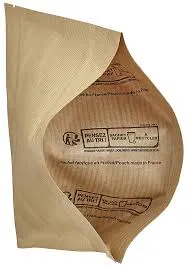Understanding the Basics and Benefits of Flexographic Printing Techniques and Applications
Understanding Flexo Printing An Overview of Its Process and Applications
Flexo printing, short for flexographic printing, is a revolutionary printing technology that has transformed the packaging and labeling industries. It utilizes flexible relief plates to transfer ink onto a variety of substrates, making it a versatile and efficient option for high-volume production. The process is commonly employed in printing on packaging materials, labels, corrugated boxes, and even newspapers, thanks to its ability to produce vibrant colors and sharp images.
The Flexo Printing Process
The flexo printing process consists of several key stages, each contributing to the final product's quality and consistency. It begins with designing the artwork, which is then transferred onto a flexible photopolymer plate. This plate is typically made of rubber or a softer plastic, allowing it to conform to the substrate being printed on. The relief image on the plate is created through a photographic exposure process, which hardens the areas that will not receive ink.
Once the plates are ready, the press setup begins. Flexo printing uses an ink delivery system, where inks are kept in a fountain from which they are transferred to the printing plate. The ink is fluid and fast-drying, often made from water-based or UV-cured formulations, making it safer and more environmentally friendly compared to traditional solvent inks.
During the printing process, the substrate—paper, film, or any other material—is fed through the press, passing over the anilox roller. This roller regulates the amount of ink taken from the fountain and applies it evenly across the printing plate. As the substrate moves forward, it makes contact with the plate, transferring the ink and creating the desired print pattern.
Once printed, the material goes through a drying process, which is vital in flexo printing to ensure the ink sets quickly. This can be achieved through various drying technologies, such as hot air drying or UV curing. The speed of the process is one of the key advantages of flexo printing, as the inks dry rapidly, allowing for quicker job turnaround and higher production rates.
Versatility in Applications
One of the standout features of flexo printing is its versatility. Flexo presses can accommodate a wide range of materials, including porous and non-porous substrates. This capability makes it ideal for various industries, including food and beverage packaging, pharmaceuticals, and consumer goods. The ability to print on different types of surfaces, such as plastic, metallic films, and cardboard, has led to the widespread adoption of flexo printing in the packaging sector.
what is flexo printing

In the food industry, for example, flexo printing is widely used for creating labels and packaging materials that require high-quality graphics and vibrant colors. Its ability to produce large runs while maintaining color consistency makes it a preferred choice for many brands looking to ensure their products stand out on store shelves.
Furthermore, flexo printing is particularly well-suited for producing labels, including pressure-sensitive labels, shrink sleeves, and in-mold labels. The flexibility of the process allows brands to utilize innovative packaging solutions that enhance their product appeal and effectiveness in retail environments.
Advantages of Flexo Printing
Several advantages position flexo printing as a leading choice for packaging and label production. First and foremost is the speed of operation. Flexo printing presses can run at high speeds, making them efficient for large-volume jobs. This speed does not compromise quality, as advancements in technology continue to enhance the output quality of flexographic prints.
Another key benefit is the adaptability of the inks used in flexo printing. The technology is compatible with various ink types, including water-based, solvent-based, and UV inks. This flexibility allows businesses to select inks that meet their specific requirements concerning durability, drying times, and environmental concerns.
Additionally, flexo printing systems are generally more environmentally friendly than other printing methods due to the use of lower volatile organic compounds (VOCs) in inks. As businesses are increasingly focusing on sustainability, flexo printing aligns well with eco-friendly practices.
Conclusion
In summary, flexo printing is a robust and versatile printing technology with significant advantages in speed, efficiency, and environmental impact. Its innovative approach to ink application and the ability to print on a variety of substrates have made it a cornerstone in the packaging and labeling industry. As technology continues to advance, flexo printing is poised to adapt and thrive, further cementing its role as a leader in the world of commercial printing. Whether for packaging food products, consumer goods, or industrial applications, flexo printing remains a dependable choice for businesses seeking high-quality, visually appealing results.













